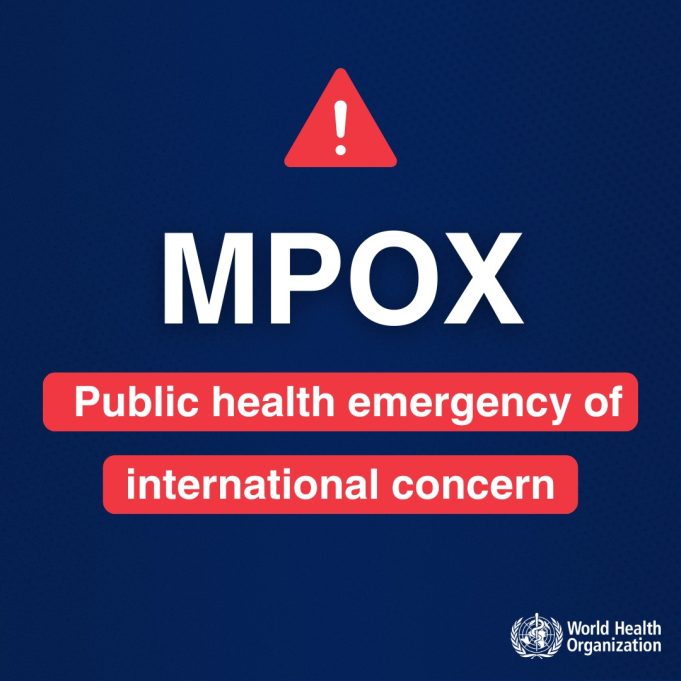MPOX, also known as monkeypox, is caused by a virus from the genus Orthopoxvirus, the same family that includes smallpox, cowpox, and variola viruses. Mpox was first declared a Public Health Emergency of International Concern (PHEIC) in July 2022 due to its spread beyond the African continent. This emergency status was lifted in May 2023 but was recently reinstated on August 14, 2024, following a resurgence of cases worldwide. In Malaysia, there have been nine cases of mpox so far, all reported in 2023.
The mpox virus is divided into two main strains: Clade I (subclades IA and IB), typically found in Congo and Central Africa, and Clade II (subclades IIA and IIB), commonly found in West Africa. During the 2022 outbreak, the less virulent Clade II strain was the most prevalent.
However, the current outbreak shows a higher prevalence of the more infectious and deadly Clade I strain, which causes more severe illness. Additionally, Clade I has proven to be highly contagious, with healthcare workers becoming infected through indirect contact, such as when changing the bedding of infected patients.
Mpox typically begins with symptoms like fever, muscle aches, sore throat, headaches, swollen lymph nodes and a rash that evolves over two to four weeks, but the progression can vary. The mpox rash resembles blisters or sores and can appear on the face, hands, feet, groin, genital, and anal regions, as well as inside the mouth, throat, rectum, vagina, or on the eyes. The number of sores varies from one to thousands. Some people may experience severe pain from rectal inflammation (proctitis) or genital inflammation, which can lead to difficulty urinating.
With the current surge of news about mpox circulating on social media, in the news, and among the public, there is an urgent need to dispel common myths surrounding the virus for effective prevention and public health management. Many people, still reeling from the Covid-19 pandemic, are anxious and unsure whether the person next to them might carry an infectious disease. The ongoing mpox outbreak has only fueled this anxiety, contributing to increased stigma.
Let’s address some of the common misconceptions:
Misconception 1: ‘Mpox is exclusively a homosexual disease’
Reality: The Clade IIB strain that spread beyond Africa in 2022 was less virulent, with a survival rate of around 99.9%. This strain required close contact for transmission, which led to most cases being reported among people engaging in high-risk sexual activities, particularly men who have sex with men. However, the current outbreak is different. The strain now circulating spreads more easily through direct contact with infected lesions, bodily fluids, contaminated objects, or close exposure to respiratory droplets from infected individuals
Misconception 2: ‘Mpox is airborne like COVID-19 and will cause another pandemic’
Reality: Mpox primarily spreads through direct contact with infected skin lesions, not through airborne transmission like COVID-19. COVID-19 is primarily an airborne virus that spreads quickly, even through people without symptoms—asymptomatic carriers were a major challenge early in the pandemic. While mpox can spread through close exposure to respiratory droplets, such as during intimate activities, its primary mode of transmission is contact with visible skin lesions. This reduces the likelihood of a widespread airborne pandemic similar to Covid-19.
Misconception 3: ‘Only people in Africa or travelers are at risk’
Reality: Although the virus originated in Africa, it has spread globally and can affect anyone who is exposed to an infected person. Governments worldwide have implemented public health measures to mitigate the risk. For example, in China, all people and goods entering the country are being monitored for mpox over the next six months. In Malaysia, travelers from countries with reported mpox cases are asked to self-monitor for 21 days upon entry. Additionally, front-line workers have been put on alert and provided with comprehensive guidance on managing suspected mpox cases.
Misconception 4: ‘Mpox is a deadly disease’
Reality: Most mpox cases are mild, with a relatively low mortality rate compared to more virulent diseases. However, vulnerable
populations—such as immunocompromised individuals, infants, and pregnant women—are at higher risk for serious complications. Clade I is associated with more severe illness and higher mortality, with some outbreaks leading to death in up to 10% of cases. That said, recent outbreaks have shown lower death rates. Clade II, which caused the 2022 global outbreak, leads to less severe infections, with over 99.9% of people surviving.
Misconception 5: ‘Vaccines are ineffective or unavailable’
Reality: Vaccines for mpox, such as JYNNEOS and ACAM2000, are effective and currently recommended for individuals at higher risk, including those who have had close contact with an infected person or face a higher risk of exposure. Mass vaccination isn’t advised currently.
Travelers who may be at risk should consult their healthcare provider to determine if vaccination is necessary. Even with vaccination, it’s important to continue practicing preventive measures, such as avoiding close contact with infected individuals. The Ministry of Health, Malaysia is actively monitoring the situation, and it is expected that the vaccine will be made available as soon as possible if deemed necessary.
In conclusion, it is important that anyone displaying symptoms suggestive of mpox, or with a history of exposure or have travelled to a high-risk area, seek immediate medical attention for both treatment and the prevention of further spread.
We should practice compassion and ensure that accurate information is shared to prevent discrimination and encourage early reporting and treatment- seeking behavior. It’s crucial to rely on timely and reliable information from trusted sources, such as the Ministry of Health, Malaysia, particularly when reading online content.

Dr Durga Vettivel is a senior lecturer in family medicine at the School of Medicine, Faculty of Health and Medical Sciences, Taylor’s University.

















